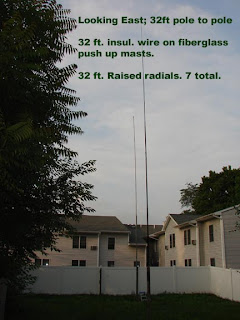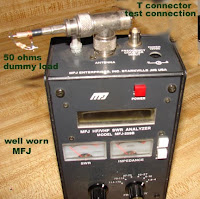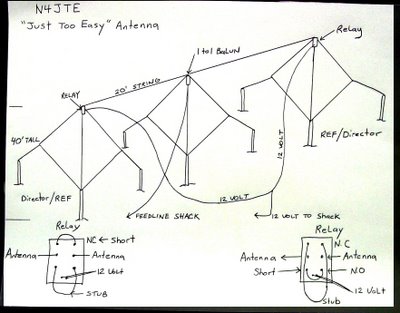Is Ham Radio Still Relevent ?
Is Ham Radio Still Relevant?
Bob Raynor N4JTE
I’m presenting this article to hopefully ask some pertinent questions that might inspire thoughtful discussion on where we’ve been, where we are now, and what does the future hold for Amateur radio.
Retrospective;
The origin and evolution of Ham radio clearly shows that we were blessed with some very talented innovators and experimenters.
In 1936 W9GFZ, Grote Reber was instrumental in the design and development of the first radio astronomy telescope; he built it out of wood and wires and started a whole new discipline in the science world. In 1935 Edwin Armstrong, among other radio inventions, laid the ground work for what we now call FM
During the following 15 years the amateur community contributed many innovations we use today like SSB, the yagi antenna, 2 meter moonbounce and SSTV over amateur radio bands, before half the country had a TV in their living room.
It pays to remember that Hams launched their own communication satellite in 1961. Oscar 1 predated by 40 years the satellite worldwide communications we take for granted these days.
I, and many others probably set up their own HF and VHF repeater stations over 30 years ago, predating the cell tower culture by many years. We also introduced Packet and RTTY during that era while the internet was still in it’s infancy.
Sooooo, what have we done lately to match those advances?
Are we content with the advancement of Ham Radio on any level? Of course the radios are smaller and more powerful along with the good ol plug and play capability. If not for Ham radio piggybacking on computer technology we probably would have died from boredom by now. Are our wireless cell phone and internet emissions going out into space and competing with old Burns and Allen radio shows? Is it any wonder that some celestial visitor hasn’t graced us with their presence? To be fair, it could be 80 meters slowing down that first visit. Scientists tell us that computer memory is doubling every year and in 10 years a super computer will equal the process power of our brains pound for pound!
At this rate we will be living thru avatars and visiting Pam on the beach between our feedings in the nursing home.
It’s probably more fair to define the relevance of ham radio to our own experiences; possibly, but we as Ham operators live in our own box of blocks, sorta like preaching to the choir.
My favorite times on the radio revolved around being an NCS on the Maritime Mobile Service net running emergencies, phone patches for deployed military, Antarctic scientists and scared medical students in Granada. Well, that whole deal got antiquated in a heartbeat after Sat phones and GPS technology took charge. I got over it and adapted to other areas of interest in Ham radio but the fact remains that newer technology beat the pants off of that avocation.
What’s the Next Big Thing in ham radio ? Will it take an Armageddon to reacquaint the great tech savy crazed majority that a radio, a wire, and a battery will still allow communication between human beings ? Sorry no tweets !
Hell of a scenario but played out occasionally to indifferent ears during recent natural and unnatural disasters.
Is it fair to expect a Hobby to lead the way in technology ? Think about the RC airplanes we built and played with that evolved into the Predator taking out the bad guys.
Will there be an engineer or some Ham radio operator in our lifetime that will jump out of the box and design a super efficient HF antenna that doesn’t need towers and acreage? The laws of physics are being challenged/ changed every hour to explain the origin of the universe. So why not the good old, and I mean old, antenna theories we confine ourselves to.
Scientists are working on HFGW, high frequency ground wave propagation thru the Earth layers that has shown some remarkable progress and interesting results worldwide. Hope there a few Hams on that team.
I have to assume that most of us are content with where we are in the technology aspect of our hobby and take comfort in our ability to chat with friends, chase some DX or building antennas. Sure it’s a fun way to pass the time and keep in touch but I, for one, hope we can restore the incredible quest for progress and sense of urgency that the original innovators began, and somehow, take the baton finally and figure out some new ways to survive the challenge of competing in sterile and artificial technologies.
I am raising all these questions because it seems to me that Ham radio has stagnated and not kept up with its pioneering history of innovation and cutting edge technology. If you consider hooking up your radio to a computer as the paradigm of Ham radio then perhaps my age is showing.
What would be cool from my limited perspective would be an HF radio with a self contained power source that transmits 100 watts and weighs the same as a laptop. Or maybe a “caller ID” on received signals displaying the call sign, consider the ramifications of that little device. It would be enlightening to know what others would like to see on the Ham market in the near future.
I am sure that there are many ways for Ham radio to regain its promise and it’s
lead in cutting edge technology envisioned by those pioneers over 50 years ago.
What’s next? Are we just rearranging chairs on the Titanic??
Tnx for reading,
N4JTE
Bob Raynor N4JTE
Retrospective;
The origin and evolution of Ham radio clearly shows that we were blessed with some very talented innovators and experimenters.
In 1936 W9GFZ, Grote Reber was instrumental in the design and development of the first radio astronomy telescope; he built it out of wood and wires and started a whole new discipline in the science world. In 1935 Edwin Armstrong, among other radio inventions, laid the ground work for what we now call FM
During the following 15 years the amateur community contributed many innovations we use today like SSB, the yagi antenna, 2 meter moonbounce and SSTV over amateur radio bands, before half the country had a TV in their living room.
It pays to remember that Hams launched their own communication satellite in 1961. Oscar 1 predated by 40 years the satellite worldwide communications we take for granted these days.
I, and many others probably set up their own HF and VHF repeater stations over 30 years ago, predating the cell tower culture by many years. We also introduced Packet and RTTY during that era while the internet was still in it’s infancy.
Sooooo, what have we done lately to match those advances?
Are we content with the advancement of Ham Radio on any level? Of course the radios are smaller and more powerful along with the good ol plug and play capability. If not for Ham radio piggybacking on computer technology we probably would have died from boredom by now. Are our wireless cell phone and internet emissions going out into space and competing with old Burns and Allen radio shows? Is it any wonder that some celestial visitor hasn’t graced us with their presence? To be fair, it could be 80 meters slowing down that first visit. Scientists tell us that computer memory is doubling every year and in 10 years a super computer will equal the process power of our brains pound for pound!
At this rate we will be living thru avatars and visiting Pam on the beach between our feedings in the nursing home.
It’s probably more fair to define the relevance of ham radio to our own experiences; possibly, but we as Ham operators live in our own box of blocks, sorta like preaching to the choir.
My favorite times on the radio revolved around being an NCS on the Maritime Mobile Service net running emergencies, phone patches for deployed military, Antarctic scientists and scared medical students in Granada. Well, that whole deal got antiquated in a heartbeat after Sat phones and GPS technology took charge. I got over it and adapted to other areas of interest in Ham radio but the fact remains that newer technology beat the pants off of that avocation.
What’s the Next Big Thing in ham radio ? Will it take an Armageddon to reacquaint the great tech savy crazed majority that a radio, a wire, and a battery will still allow communication between human beings ? Sorry no tweets !
Hell of a scenario but played out occasionally to indifferent ears during recent natural and unnatural disasters.
Is it fair to expect a Hobby to lead the way in technology ? Think about the RC airplanes we built and played with that evolved into the Predator taking out the bad guys.
Will there be an engineer or some Ham radio operator in our lifetime that will jump out of the box and design a super efficient HF antenna that doesn’t need towers and acreage? The laws of physics are being challenged/ changed every hour to explain the origin of the universe. So why not the good old, and I mean old, antenna theories we confine ourselves to.
Scientists are working on HFGW, high frequency ground wave propagation thru the Earth layers that has shown some remarkable progress and interesting results worldwide. Hope there a few Hams on that team.
I have to assume that most of us are content with where we are in the technology aspect of our hobby and take comfort in our ability to chat with friends, chase some DX or building antennas. Sure it’s a fun way to pass the time and keep in touch but I, for one, hope we can restore the incredible quest for progress and sense of urgency that the original innovators began, and somehow, take the baton finally and figure out some new ways to survive the challenge of competing in sterile and artificial technologies.
I am raising all these questions because it seems to me that Ham radio has stagnated and not kept up with its pioneering history of innovation and cutting edge technology. If you consider hooking up your radio to a computer as the paradigm of Ham radio then perhaps my age is showing.
What would be cool from my limited perspective would be an HF radio with a self contained power source that transmits 100 watts and weighs the same as a laptop. Or maybe a “caller ID” on received signals displaying the call sign, consider the ramifications of that little device. It would be enlightening to know what others would like to see on the Ham market in the near future.
I am sure that there are many ways for Ham radio to regain its promise and it’s
lead in cutting edge technology envisioned by those pioneers over 50 years ago.
What’s next? Are we just rearranging chairs on the Titanic??
Tnx for reading,
N4JTE
















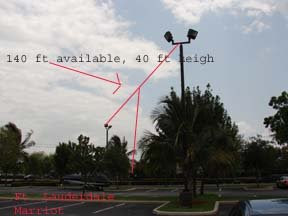
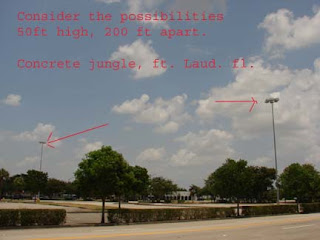 will keep you posted if I make bail.
will keep you posted if I make bail.